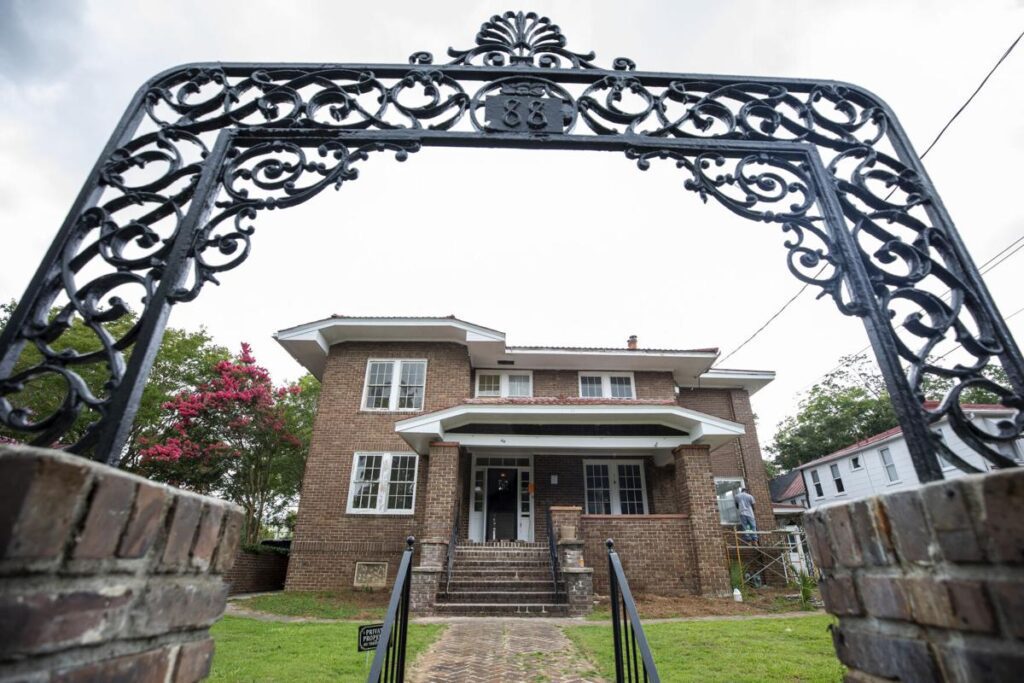Media Coverage
Editorial: Charleston didn’t create the problem at 88 Smith; it can help solve it
preservation-admin , July 17, 2021
Read the original Post and Courier article here
The city of Charleston temporarily halted work on the exterior of 88 Smith St. because at least two abandoned graveyards were located on the property. Lauren Petracca/Staff
By Lauren Petracca lpetracca@postandcourier.com
We’ve seen two regrettable incidents recently that show the growing tension between respecting the dead from the distant past and putting our increasingly valuable real estate to some new use. Both occurred in the city of Charleston, which we hope will soon take meaningful action to protect our old cemeteries and find the right balance between property rights and honoring the dead.
The most recent incident involved the owner of the early 20th century house at 88 Smith St. in downtown Charleston, which was built on land with at least two abandoned graveyards. The city halted work on a foundation repair, including 16 new helical piles, but later let the some work on the house resume.
In May, the state ordered the developer of the Oak Bluff subdivision in Cainhoy to stop work and arrange for a new archaeological survey for a more definitive mapping of an African American burial ground. Photos showed rectangular depressions that indicated potential gravesites, and community members voiced concern.
Neither incident reflects callous property owners as much as the inadequacy of our laws that protect burial grounds. Brian Turner, the Preservation Society of Charleston’s advocacy director, researched both incidents and noted that city attorneys say they rely on state law, but the state Department of Health and Environmental Control only gets engaged if the work needs a state permit. Even then, there’s often no site visit — only an instruction to notify the agency if any remains are found during the work. “The general message is that this is a very unregulated environment,” he said. “It’s not enough to protect the sites, but it’s also not enough to give predictability in the land development process. Even people who are more conservative on the property development side of this would like that.”
Those familiar with a particular city or county are often said to know where the bodies are buried. Those familiar with the Charleston region know they’re buried almost everywhere. The city of Charleston discovered unmarked and unknown graves both in its recent remodeling of the Gaillard Auditorium and during initial work at a possible James Island fire station site.

